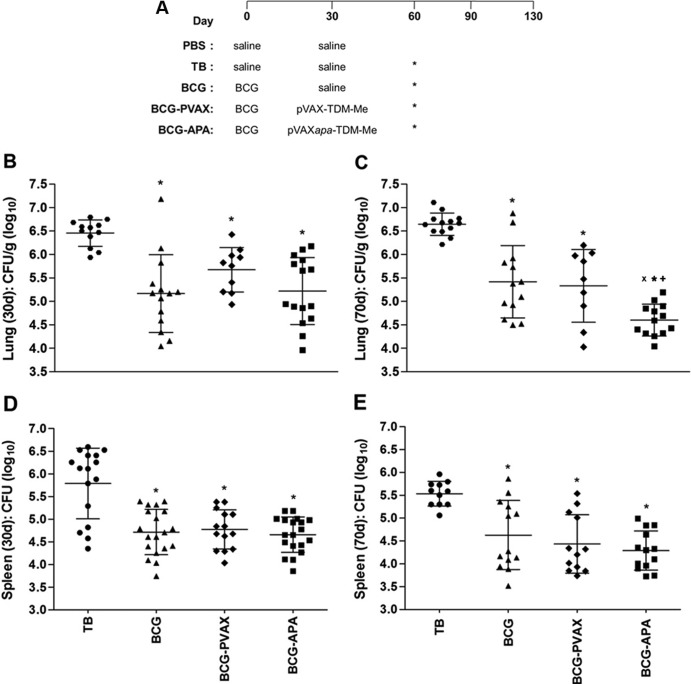Fig 2.
Protection against experimental TB conferred by the different vaccination regimens. (A) The time points for immunizations, infection, and sample collection are shown. Asterisks indicate the days on which mice were infected. BALB/c mice were immunized s.c. with a single dose of BCG (5 × 105 CFU; BCG group) or with one dose of BCG administered s.c. followed by one dose of pVAX-TDM-Me (BCG-PVAX) or pVAXapa-TDM-Me (BCG-APA) administered i.m. after 30 days. Thirty days after vaccination, mice were challenged intratracheally with a virulent strain of M. tuberculosis (1 × 105 CFU). At 30 or 70 days after infection, the lungs (B and C) and spleens (D and E) were processed to determine bacterial loads by counting the CFU. The bacterial load is expressed as log10 CFU/g of lung and spleen, derived from the means ± SDs of serial dilutions individually counted for each group. P values indicating statistically significant differences among the groups are displayed in the representative graphs. *, P < 0.05 versus nonimmunized infected mice (TB group) at 30 days postinfection. The following symbols indicate significance at 70 days postinfection: *, P < 0.001 versus the TB group; X, P < 0.05 versus the BCG-PVAX group; and +, P < 0.005 versus the BGG-vaccinated group. Results of one representative experiment out of three independent experiments are shown. (Three experiments were conducted with various numbers of animals in each group, with a total of 9 to 19 mice in the 3 experiments.)

